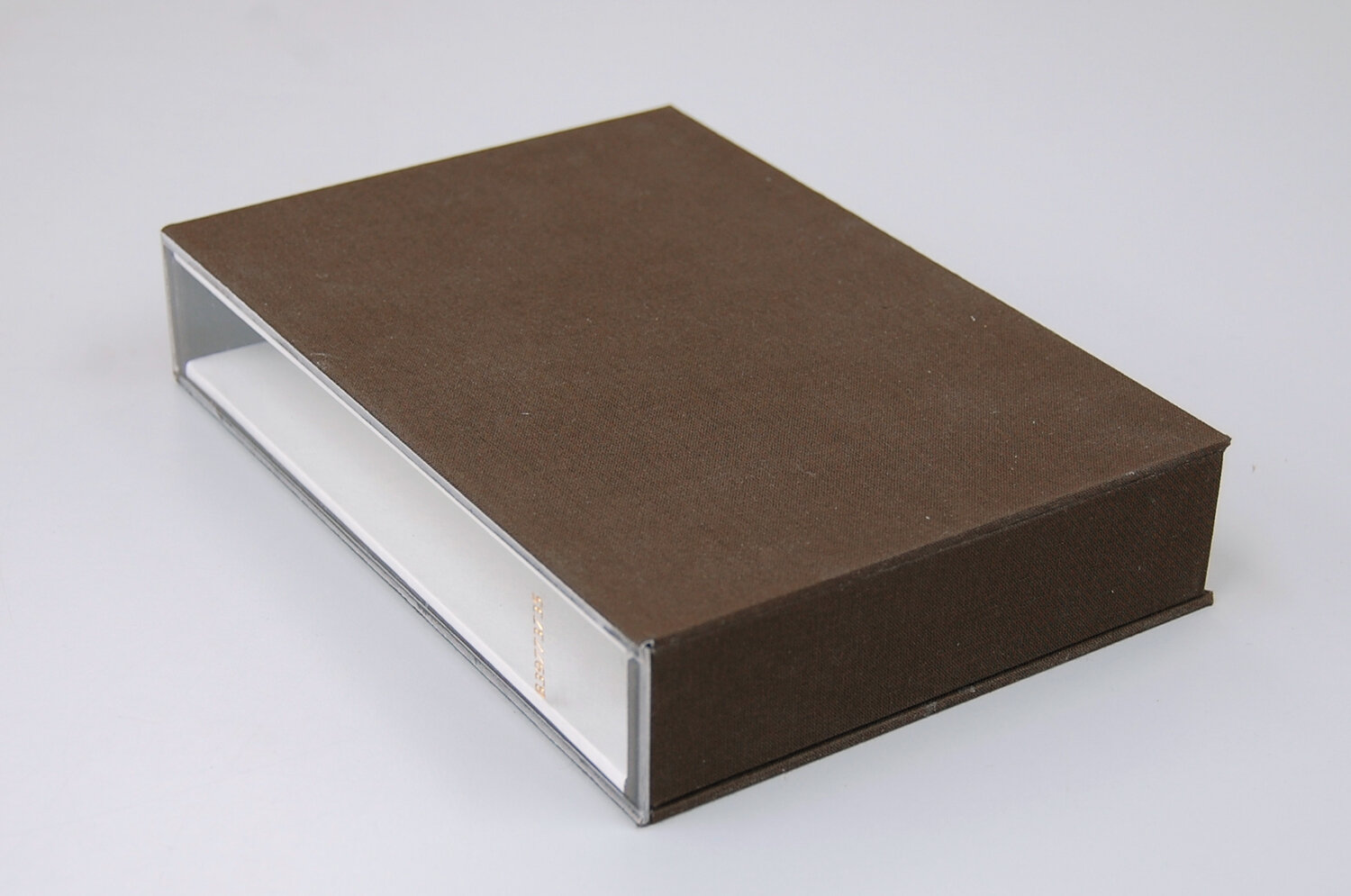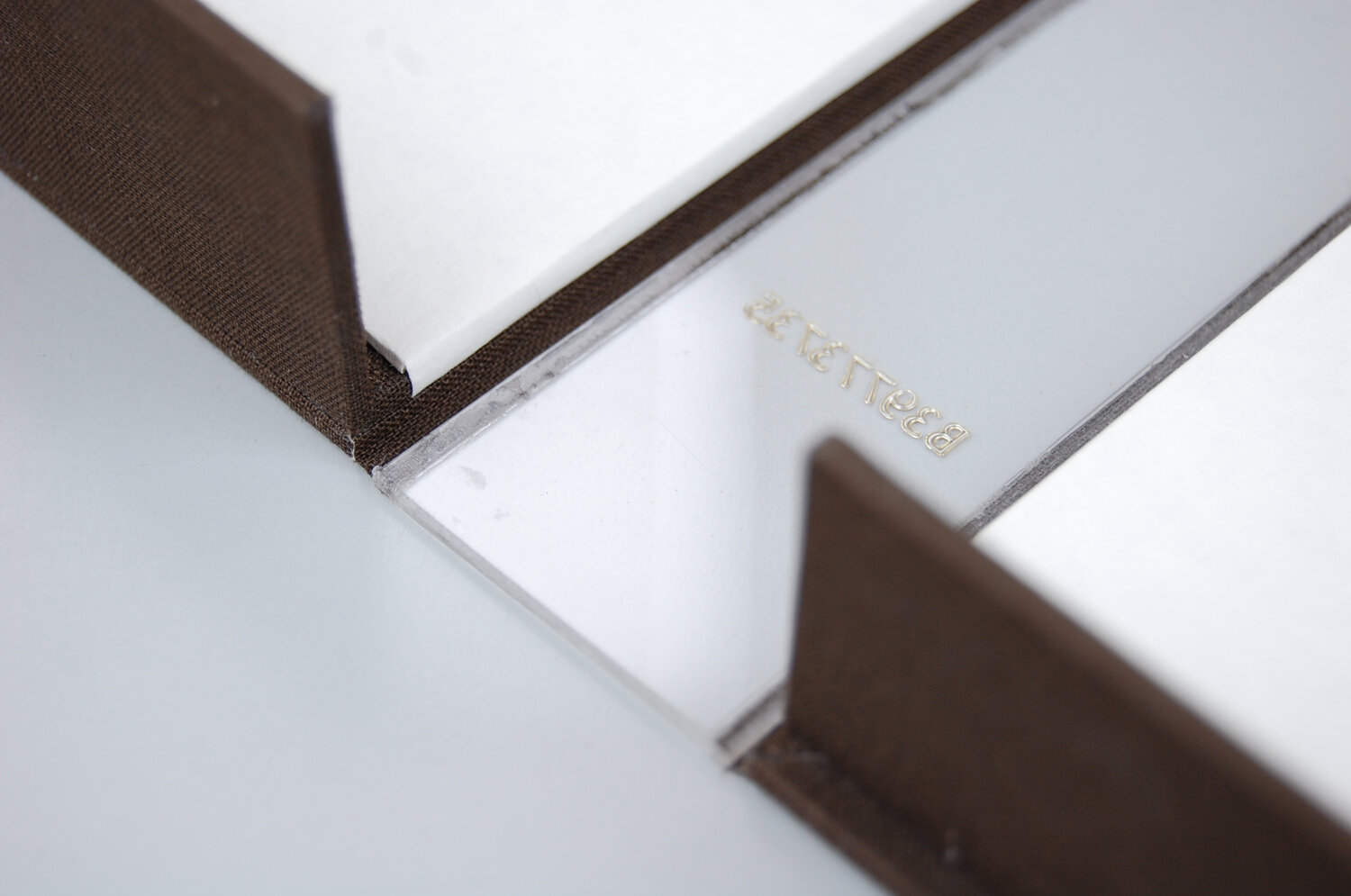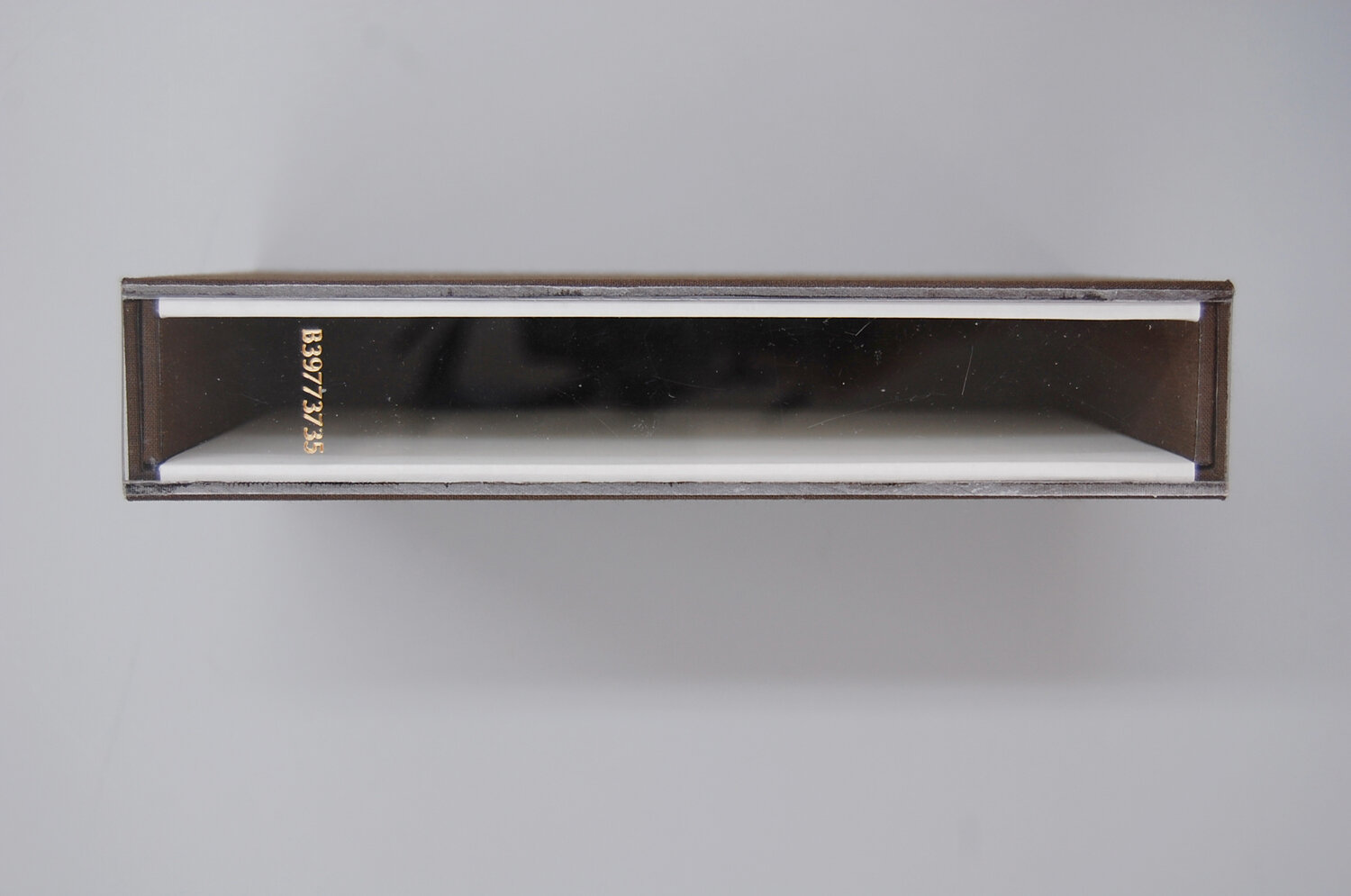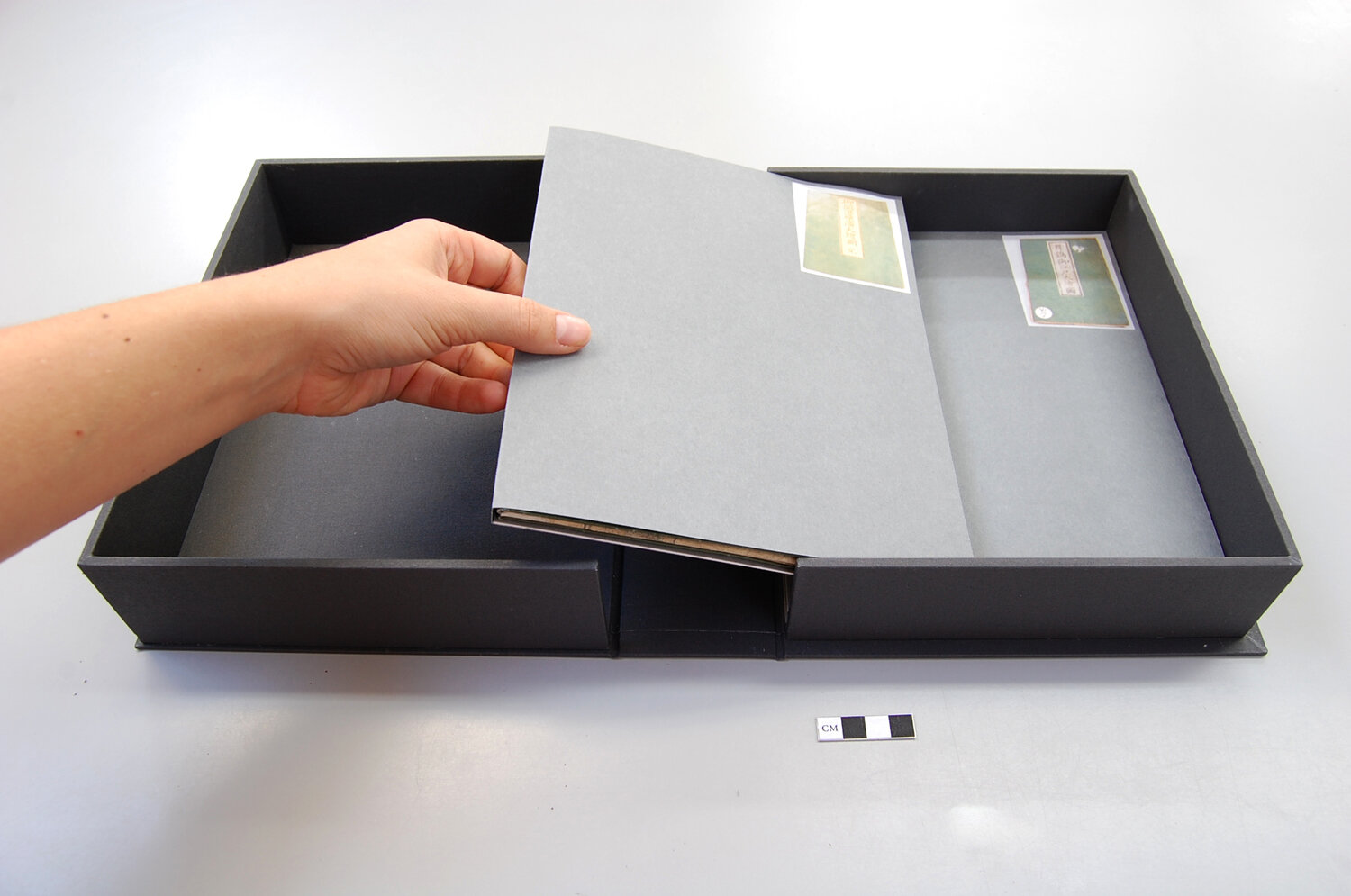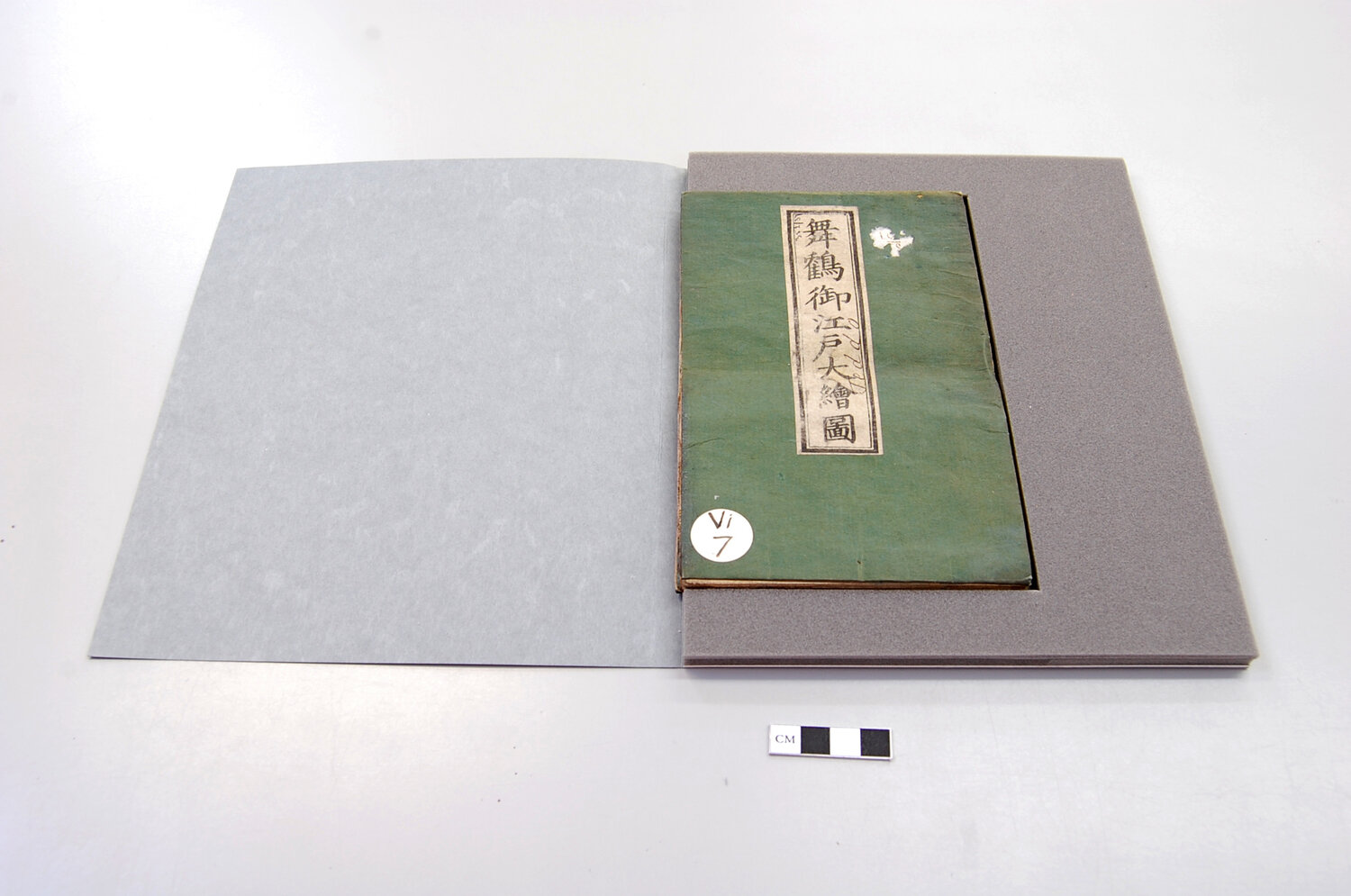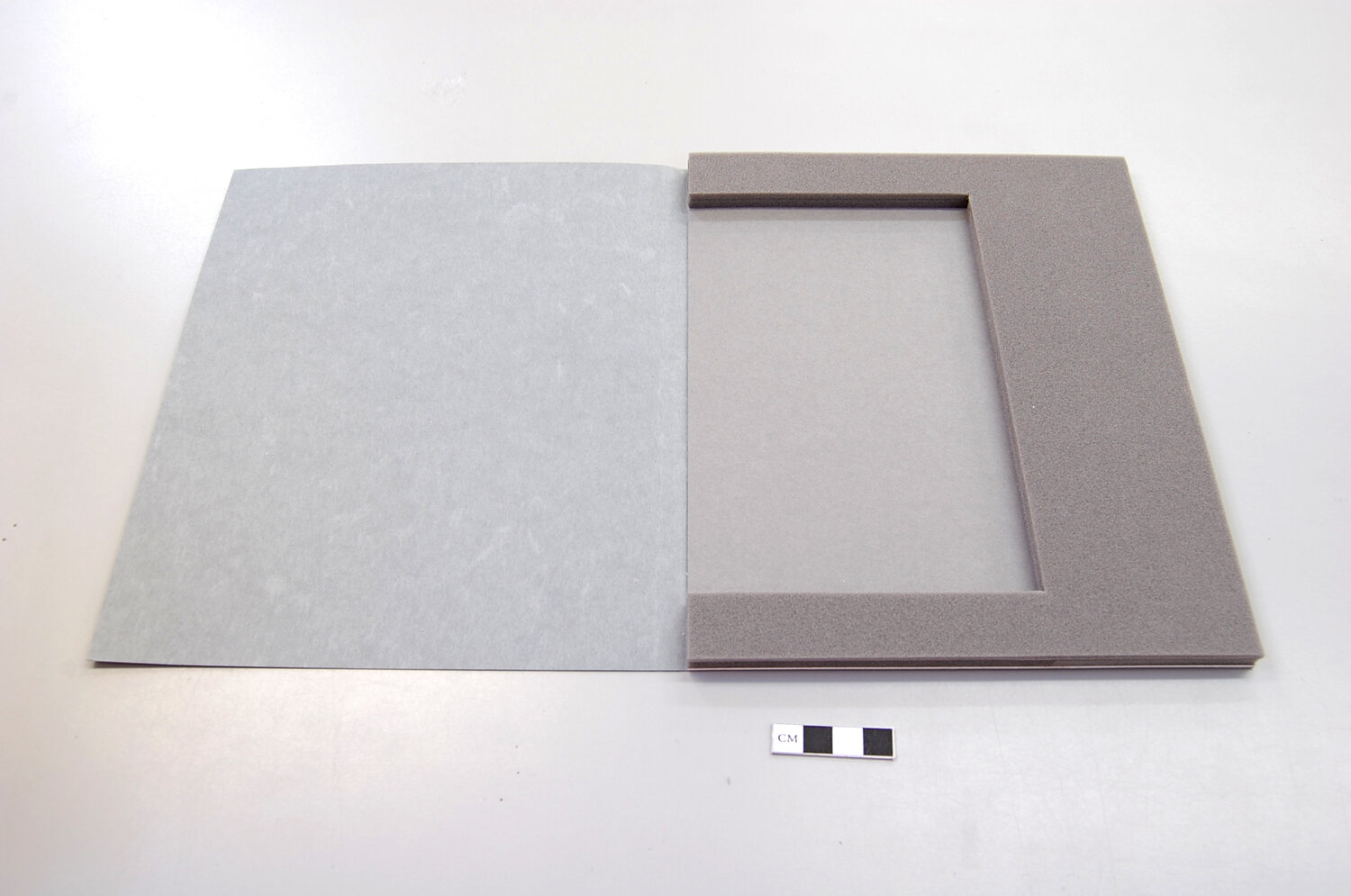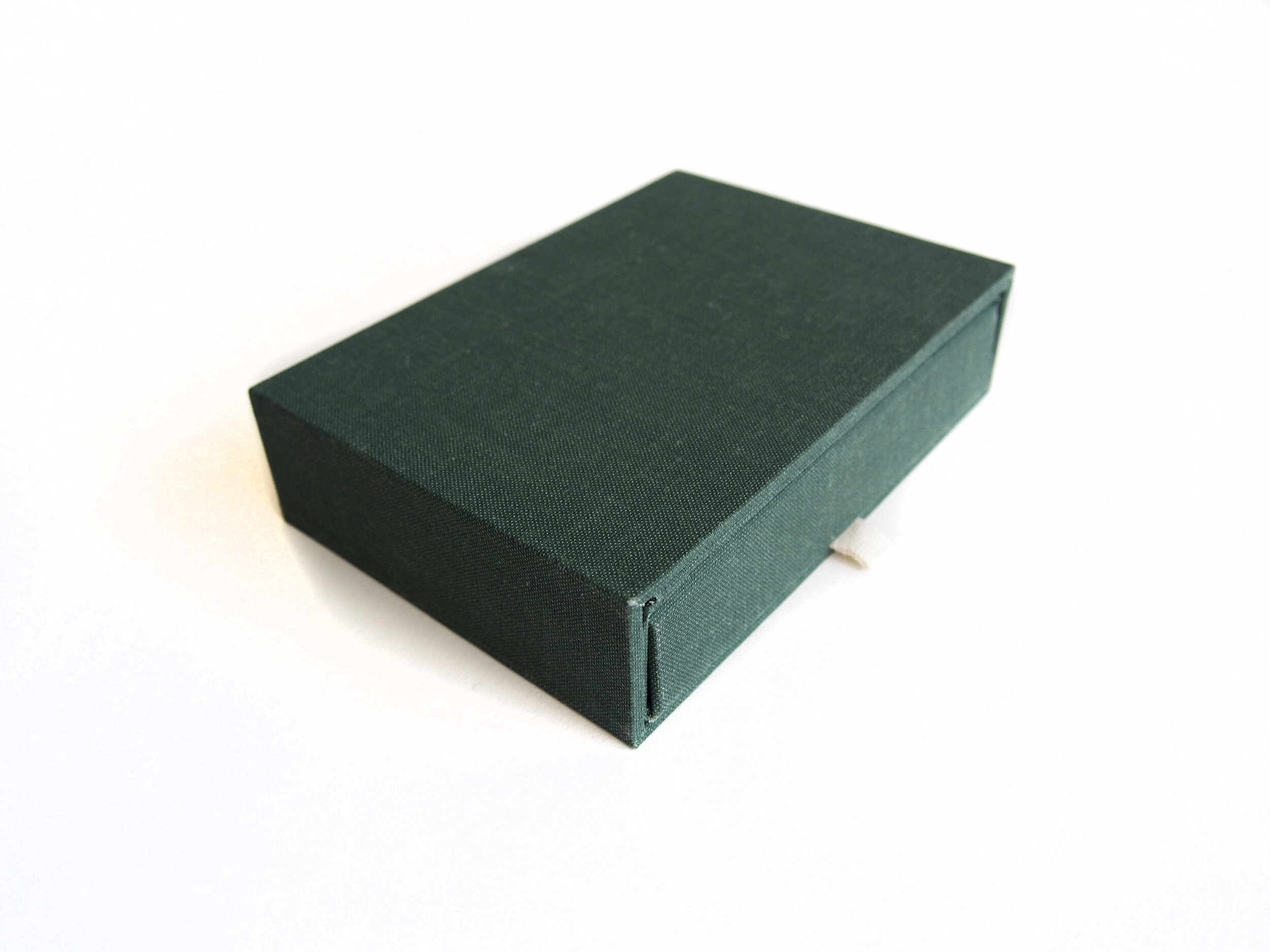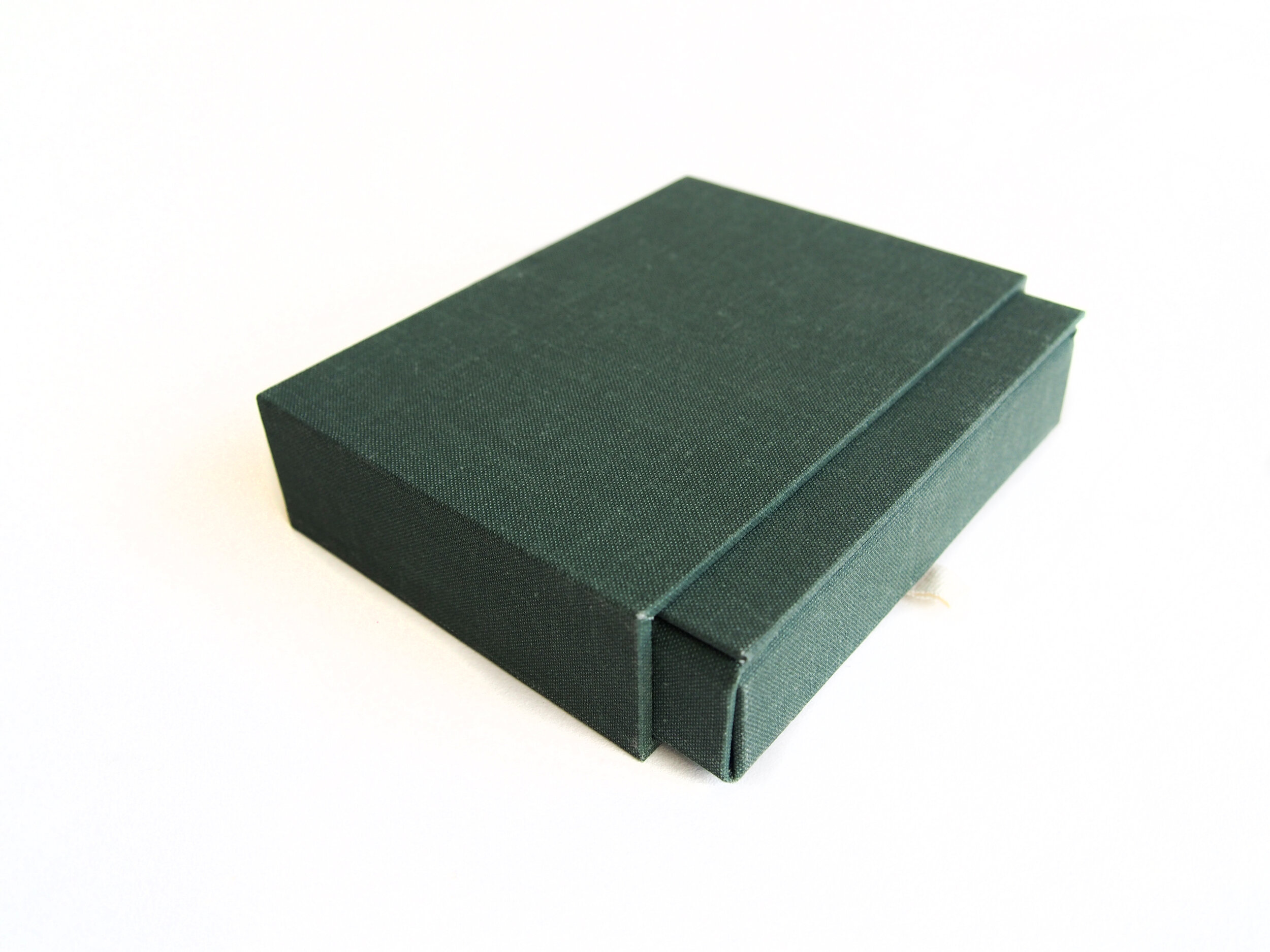enclosures
We make a variety of types of enclosures for books and related materials depending on the size of the object, the level of protection needed, and budget. We can also advise on off-the-shelf boxes and retrofitting ill-fitting boxes.
drop spine boxes
Also called solander boxes or clamshell boxes, these are made with one or two layers of binder’s board, covered in cloth, and look like a flat-backed book on the shelf. They can be made with shelves or other separate compartments for different items: the one at the top of this page has a shelf for the original spine removed in a rebacking treatment. They work well for items that are not perfectly square, as compensation can be built in, and likewise, particularly fragile elements can be cushioned. They are only appropriate for items at about 2cm thick or more, and they add more shelf space than other options—four board thicknesses means about 8mm per box. They are also more expensive than other enclosures because they take much longer to make. However, if appropriate they are the sturdiest, most protective option. There are also options for making them look quite nice on open shelving, including with blocked leather labels.
This drop spine box has a pressure lip at the fore-edge, to help hold the parchment binding closed.
We have also made boxes with clear spines, to allow the book inside to be visible. This could be advantageous for aesthetic reasons (on an open access shelf in a library) or for security.
This box was made to house a set of Japanese bindings previously shoved into an ill-fitting slip case that was probably made for something else. We made folders for each one, using the stable foam to pad out the height and width to the dimensions of the largest book, then built the box to fit them. Photos of the binding on the outside of each folder served as visual labels
Boxes can be decorative, too, even though in most instances they are purely functional. This one has pressed flowers sandwiched between handmade paper and transparent vellum, made flush with the bottom of the trays so that they don’t impress on the book. Silk ties are largely for show but add interest to the opening of the box.
four flaps
Four flaps are appropriate for thin material that needs protection against abrasion, dust, and light, or a bit more physical stability if it’s floppy, or for keeping several items together. They are made with two overlapping strips of thin card folded around the item(s) with a locking tab. You can write directly on the card or add barcodes or other labels. They take up minimal extra shelf space—just the thickness of four pieces of card. They are the least expensive option for a custom enclosure.
Variations of the four-flap, including this one below with a hard portfolio case, can provide added stability or a finer level of polish for the shelf.
phase boxes
Phase boxes were initially designed as temporary housing but suit for long-term storage too. They are sturdier versions of four-flap folders, made with thicker board, with washer and string closure.
slip case with four-flap
We came up with this option to spec for a client who wanted both a rigid four flap and a slip case. It is a good idea to have some kind of barrier between an object and a slip case: because the slip case fits snugly around the object and doesn’t open up in any way to allow more access, it necessarily results in a fair amount of abrasion on the book as it goes in and out. Some kind of protection, whether it’s a wrapper or thin four-flap or this more sturdy number, will prevent the object from being abraded.
Slip cases can also be made to have false spines to they appear as almost any style book you want from the shelf, such as a leather book with raised bands as in this example below.



